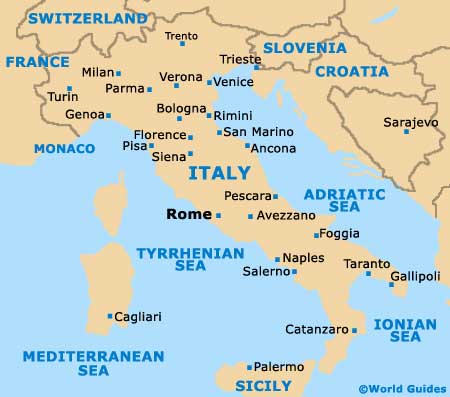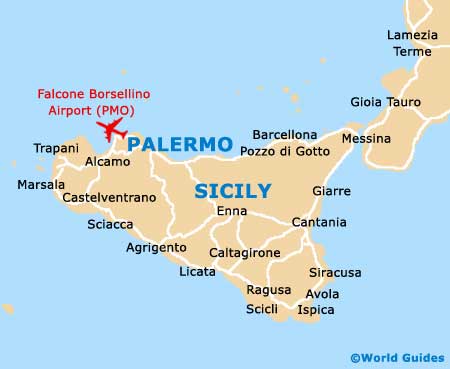Palermo University
The University of Palermo is located in the Sicilian city of Palermo. It was formally founded in 1805, but records show that an institution of higher learning existed in Palermo as early as the mid-15th century. This earlier university initially offered degree programmes in medicine and law, but when the Jesuit fathers came, philosophy and theology were added to its academic offerings. At one point in the 17th century, the Jesuits were expelled from Italy by King Ferdinand, which made the university inactive for the next 37 years.
Today, the University of Palermo presently has a student population of around 50,000 and a staff of over 2,000.
History
The University of Palermo was officially founded in 1806, although its earliest roots date back to 1498 when medicine and law were taught there. A little later in history, from the second half of the 16th century from their seat at the Collegio Massimo al Cassero, the Jesuit Fathers granted degrees in Theology and Philosophy - subjects in which they had been masters for over 200 years.
In 1767 they were expelled from the kingdom by King Ferdinand I, until 37 years later when they returned to take their seat - which in the meantime had been turned into the Regia Accademia.
At this time the same King Ferdinand decided to grant a worthy seat to the Accademia, moving its location to the Convent of the Teatini Fathers next to the Church of St. Giuseppe.
After the unification of Italy in 1860 the University of Palermo was modernised under the impetus of the chemist Stanislao Cannizzaro and the minister and specialist in Arab studies Michele Amari, more or less assuming its present appearance. Since 1984 the main building of the University, housing the Rector's office, is Palazzo Chiaramonte-Steri, one of the most important historical buildings in Palermo, built in 1307 and formerly the residence of the Chiaramonte. Not far from Palazzo Steri, on land formerly belonging to the Chiaramonte, the Botanical Gardens of Palermo constitute a further admirable pearl of the University.
Today, the University has grown to be an institution of about 2000 lecturers and 50,000 students in which research in all main fields of study is carried out. In the past few years the university has actively taken part in international cooperation programmes.
Organization
These are the 12 faculties in which the university is divided into:
- Faculty of Agriculture
- Faculty of Architecture
- Faculty of Arts and Humanities
- Faculty of Economics
- Faculty of Education
- Faculty of Engineering
- Faculty of Law
- Faculty of Mathematical, Physical and Natural Sciences
- Faculty of Medicine
- Faculty of Physics
- Faculty of Pharmacy
- Faculty of Political Sciences
University Faculties, Schools and Departments
The University of Palermo does not operate a traditional collegiate system. It has 12 faculties,
where each has several academic units under its care. The faculties and units develop the university's
various degree and diplomate programmes.
Faculty of Agriculture
The Faculty of Agriculture does important research on food production and development.
Faculty of Agriculture
The Faculty of Agriculture does important research on food production and development.
It offers advanced degree programmes in horticulture and agrarian politics. It is also host to the
Laboratorio di Chimica agraria.
Faculty of Pharmacy
The Faculty of Pharmacy is an important part of the university because it conducts research in medical treatments and pharmacological developments. It also hosts the Istitutodi Fisiologia e Nutrizione umana.
Faculty of Law
The Faculty of Law offers several degree programmes. It is the administrative arm of the Biblioteca
Faculty of Pharmacy
The Faculty of Pharmacy is an important part of the university because it conducts research in medical treatments and pharmacological developments. It also hosts the Istitutodi Fisiologia e Nutrizione umana.
Faculty of Law
The Faculty of Law offers several degree programmes. It is the administrative arm of the Biblioteca
Centrale, the university's main library.
Faculty of Engineering
The Faculty of Engineering runs several important research centres including the Laboratorio di Scienza
Faculty of Engineering
The Faculty of Engineering runs several important research centres including the Laboratorio di Scienza
dei Calcolatori ed Intelligenza Artificiale, which is a European centre for robotics,
and the Laboratorio di Misure Elettriche, which is a research institute for electrical engineering.
Faculty of Humanities
The Faculty of Humanities is made up of an extremely vocal group of students and teachers. It offers advanced degree programmes in contemporary Italian literature and Sicilian linguistics.
Faculty of Medicine
The Faculty of Medicine is made up of research institutes in neuropsychiatry, embryology, histology,
The Faculty of Humanities is made up of an extremely vocal group of students and teachers. It offers advanced degree programmes in contemporary Italian literature and Sicilian linguistics.
Faculty of Medicine
The Faculty of Medicine is made up of research institutes in neuropsychiatry, embryology, histology,
and sports medicine. It also maintains a school for specialization in cardiology.
Faculty of Mathematical, Physical, and Natural Sciences
This faculty offers degree programmes in the life sciences including advance degrees in biology and biotechnology.
Faculty of Educational Studies
The Faculty of Educational Studies is responsible for forming Italy's next generation of teachers,
Faculty of Mathematical, Physical, and Natural Sciences
This faculty offers degree programmes in the life sciences including advance degrees in biology and biotechnology.
Faculty of Educational Studies
The Faculty of Educational Studies is responsible for forming Italy's next generation of teachers,
tutors,
and ancillary educators.
Faculty of Political Science
The Faculty of Political Science offers several degree programmes including an advanced degree in
Faculty of Political Science
The Faculty of Political Science offers several degree programmes including an advanced degree in
The departments of the University of Palermo are its teaching arm. European policy.
Faculty of Motory Science
The Faculty of Motory Science does research on human kinetics.
Faculty of Motory Science
The Faculty of Motory Science does research on human kinetics.
University of Palermo Faculties and Departments
- Agriculture
- Architecture
- Arts and Humanities
- Economics
- Educational Studies
- Engineering
- Law
- Mathematical, Physical and Natural Sciences
- Medicine
- Motory Science
- Pharmacy
- Political Science

University of Palermo: Country Map of Italy

University of Palermo: Island Location Map of Palermo Area
Photo of University


































No comments:
Post a Comment